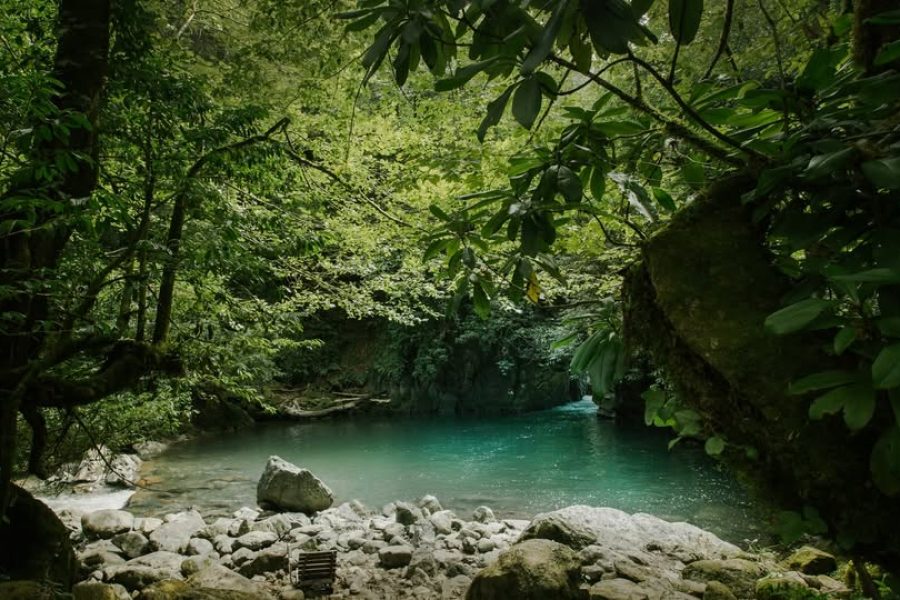The Gudisistsqali River: A River of the Liakhvi Gorge
The Gudisistsqali River (მდინარე გუდისისწყალი) is a river in the northern part of the Shida Kartli region, flowing through the Tskhinvali and Gori municipalities. As a right tributary of the Great Liakhvi River, it is part of a major river system that originates in the high peaks of the Main Caucasus Range. The Gudisistsqali itself rises on the slopes of the Germukhi Range and carves a scenic, forested valley before joining the Liakhvi. The region is known for its beautiful mountain landscapes and its complex and sensitive history.
The river flows through a landscape that blends wild nature with ancient settlements. The Liakhvi Gorge and its tributaries have been historically important corridors connecting the North and South Caucasus. The valley of the Gudisistsqali is home to several villages and historical sites, including medieval churches and fortresses, that speak to the region’s long history. Due to the current political situation, access to much of the river’s course is heavily restricted.
ℹ️ General Information
- Name of River: Gudisistsqali River (მდინარე გუდისისწყალი)
- Location: Tskhinvali and Gori municipalities, Shida Kartli, Georgia.
- Length: 25 km (15.5 miles)
- Basin Size: 153 km² (59 sq mi)
- Source (Origin): Slopes of the Germukhi Range.
- Mouth (Where it flows): Right tributary of the Great Liakhvi River.
- Main Tributaries: Small mountain streams.
📍 Geography & Course
The Gudisistsqali begins as a swift mountain stream and flows southward. Its upper and middle course runs through a deep, V-shaped gorge covered in dense forest. As it approaches the Great Liakhvi, the valley widens slightly. The river is fed by snowmelt, rainfall, and underground springs, giving it a stable flow throughout the year, which peaks in the spring.
🌿 Nature & Ecology
The river’s valley is characterized by rich forest ecosystems, with a predominance of beech, oak, and hornbeam. These forests provide a critical habitat for a variety of wildlife, including roe deer, wild boars, brown bears, and wolves. The clean water of the river supports a healthy population of brown trout, making it a valuable natural resource.
🏛️ History & Culture
The Gudisistsqali flows through a region of immense historical significance, often known as Samachablo or the Tskhinvali region.
- Medieval Fortresses and Churches: The broader Liakhvi Gorge is dotted with numerous historical monuments, such as the Nikozi Cathedral, which testify to its importance as a cultural and political center in medieval Georgia.
- Strategic Corridor: The valley has historically been a strategic route, and its control was vital for the rulers of the Kingdom of Kartli.
The river has been a silent witness to the long and often turbulent history of this land.
🚣 Activities & Tourism
Due to the current political situation and resulting access restrictions, tourism is not developed in the upper and middle parts of the river valley. In a stable environment, the area would be highly attractive for:
- Hiking and Eco-Tourism: Exploring the pristine forests and beautiful mountain scenery.
- Cultural Tourism: Visiting the numerous historical and architectural monuments of the Liakhvi Gorge.
- Fishing: The river would be an excellent destination for trout fishing.
🛤️ Accessibility
Currently, access to the upper course of the Gudisistsqali River is heavily restricted. The information provided is based on the geographical and historical context of the region. Travel to the area beyond the administrative boundary line is not possible for most people at this time.



Leave a review